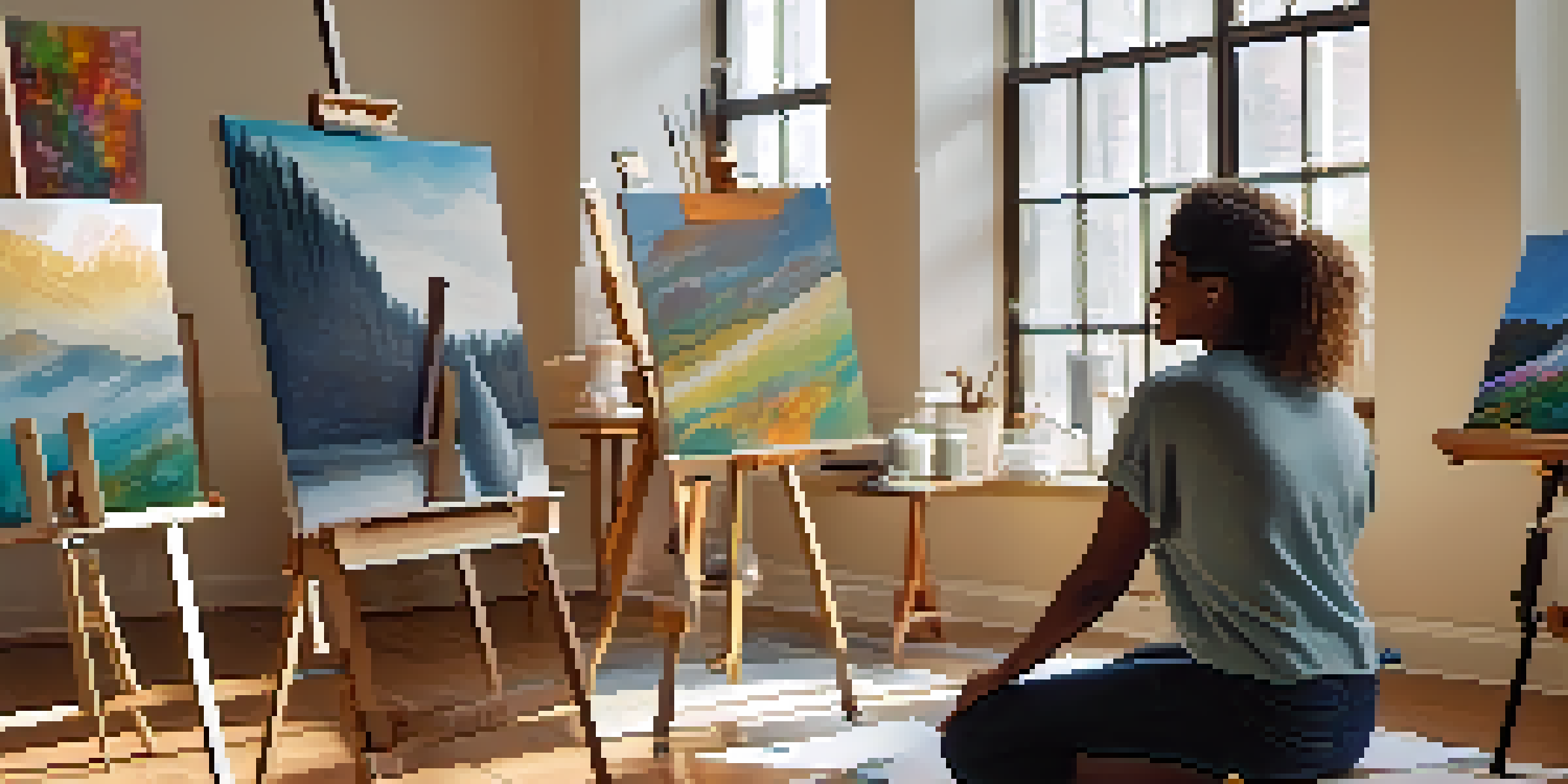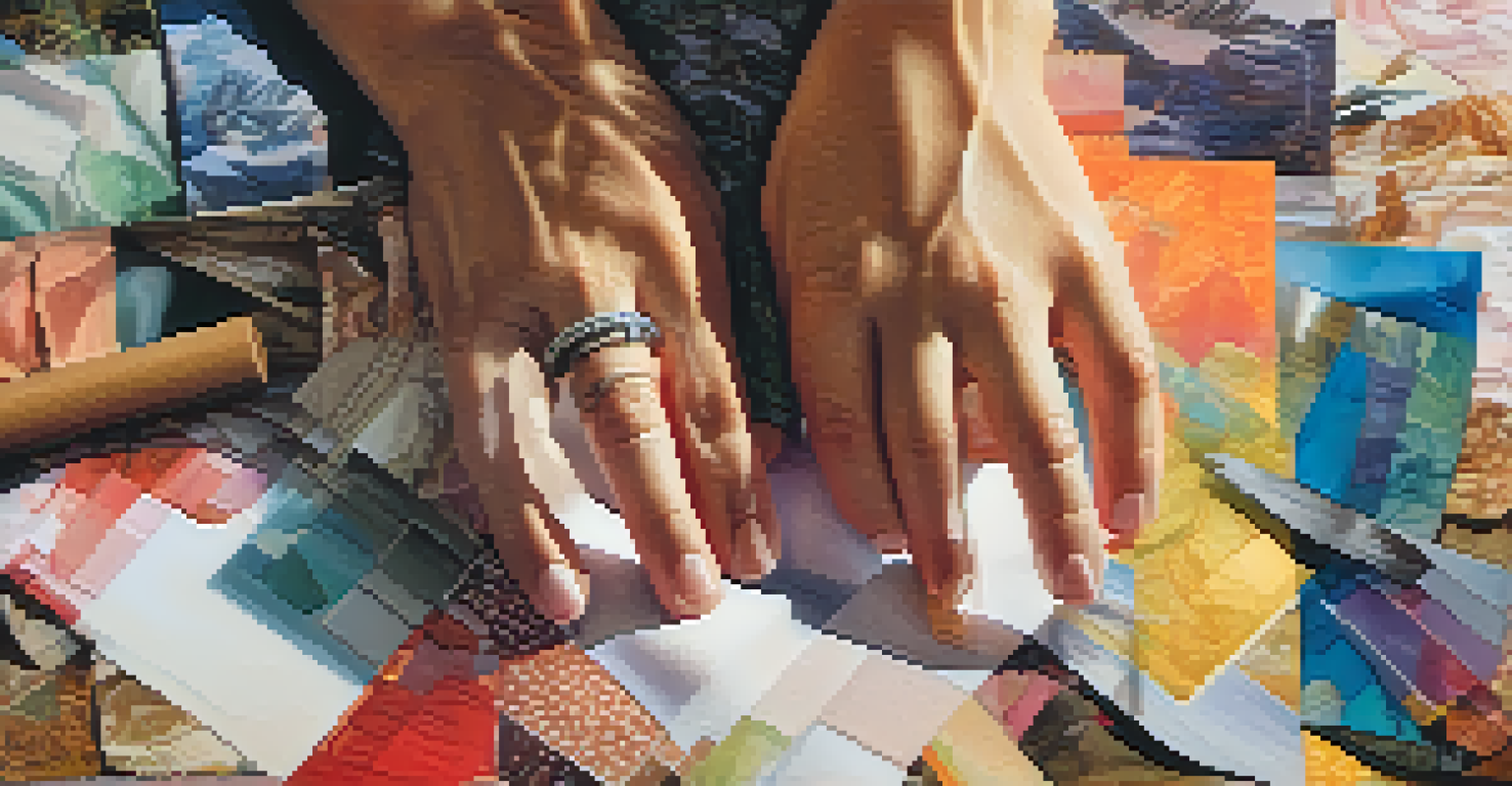Art Therapy: A Creative Path to Holistic Healing

What is Art Therapy and How Does It Work?
Art therapy combines creativity with therapeutic practices to help individuals express themselves. It provides a safe space for people to explore their feelings, thoughts, and experiences through various art forms, such as painting, drawing, or sculpting. This approach allows for emotional release and can be particularly beneficial for those who find it hard to articulate their emotions verbally.
Art is a way of recognizing oneself, a way of expressing oneself and a way of understanding oneself.
Clients engage with art materials, often guided by a trained art therapist, who helps facilitate the process. The focus is not on the artistic skill of the participant but rather on the act of creation itself. This can lead to breakthroughs in understanding oneself and addressing psychological issues.
Art therapy is rooted in the belief that the creative process can foster healing and personal growth. By tapping into the subconscious through art, individuals can uncover insights that might be hidden in their everyday thoughts and behaviors.
The Benefits of Art Therapy for Mental Health
Art therapy offers a multitude of benefits for mental health, including reduced anxiety and depression. Engaging in artistic activities can create a sense of calm and distraction, allowing individuals to step away from their worries and focus on the present moment. This mindfulness aspect can significantly improve one's mental well-being.

Additionally, art therapy can boost self-esteem and confidence. As individuals create and share their artwork, they often experience a sense of accomplishment and pride. This can be particularly empowering for those who feel marginalized or struggle with self-worth.
Art Therapy Supports Emotional Healing
Art therapy combines creativity with therapeutic practices, allowing individuals to express themselves and explore their emotions in a safe environment.
Moreover, art therapy can enhance emotional regulation. By expressing feelings through art, individuals can better understand their emotions and learn how to manage them more effectively. This skill is crucial for overall mental health and resilience.
Who Can Benefit from Art Therapy?
Art therapy is not limited to those with diagnosed mental health conditions; it can benefit anyone seeking personal growth or emotional support. Children, for instance, may find it easier to express their feelings through painting than through words, making it an effective tool for those experiencing trauma or anxiety.
The process of creation is a therapeutic process. It can help us to cope with the challenges of our lives.
Adults facing stress, grief, or life transitions can also find solace in art therapy. It provides an outlet for emotions that might be difficult to confront directly. This therapeutic approach is especially helpful for those who feel overwhelmed by their circumstances.
Even older adults dealing with cognitive decline can benefit from art therapy. Engaging in creative activities can stimulate cognitive function and promote social interaction, fostering a sense of community and belonging.
Different Techniques Used in Art Therapy
Art therapists use a variety of techniques tailored to the individual’s needs. Some common methods include collage-making, painting, and clay modeling, each serving unique therapeutic purposes. For instance, creating a collage can help clients visualize their feelings and experiences, while painting allows for emotional expression through color and form.
Another technique is guided imagery, where clients create artwork based on visualizations prompted by the therapist. This method can be particularly effective in uncovering deep-seated emotions and memories. It encourages participants to explore their inner worlds and express what they find creatively.
Wide Range of Beneficiaries
People of all ages, from children to older adults, can benefit from art therapy, making it a versatile tool for personal growth and emotional support.
Therapists may also incorporate storytelling into their sessions, encouraging clients to narrate the stories behind their artwork. This can deepen the therapeutic process, as it adds layers of meaning to the creative expression, facilitating further reflection and discussion.
Art Therapy in Different Settings
Art therapy can be practiced in various settings, including hospitals, schools, and community centers. In healthcare environments, it serves as a complementary treatment for individuals dealing with chronic illness, pain, or mental health issues. The calming nature of art can help patients cope with their circumstances and improve their quality of life.
In educational settings, art therapy can support children with learning disabilities or behavioral issues. It provides a non-verbal means of communication, allowing educators and therapists to better understand and address the needs of these students.
Community centers often host art therapy sessions to promote mental health awareness and foster social connections. These group sessions can create a supportive environment where individuals share their experiences and learn from one another, reinforcing the therapeutic benefits of creativity.
Success Stories: Real-Life Impact of Art Therapy
Many individuals have experienced profound transformations through art therapy. For example, a young woman struggling with anxiety found relief and clarity by creating expressive paintings that reflected her emotional state. Through her artwork, she learned to identify triggers and develop coping strategies, leading to a more balanced life.
Another success story involves a veteran dealing with PTSD. By engaging in sculpting, he was able to process his experiences and express his emotions in a safe setting. This creative outlet not only aided his healing journey but also helped him connect with others facing similar challenges.
Various Techniques for Expression
Art therapists utilize diverse methods like painting, collage-making, and guided imagery to tailor sessions to individual needs and enhance the therapeutic experience.
These stories illustrate the powerful impact art therapy can have on individuals from all walks of life. By embracing creativity, many have found pathways to healing, self-discovery, and renewed hope.
Getting Started with Art Therapy
If you’re interested in exploring art therapy, the first step is to find a qualified art therapist. Look for professionals who are licensed and have experience in the field. Many therapists offer introductory sessions, which can help you gauge if their approach resonates with you.
Consider what you hope to achieve through art therapy. Whether it’s managing stress, processing trauma, or simply exploring your creativity, having a clear intention can enhance your experience. Be open to the process, as art therapy often leads to unexpected insights.

Finally, remember that there are no mistakes in art therapy. It’s about the journey of self-expression rather than the final product. Embrace the freedom to create, and allow your emotions to guide you as you embark on this transformative path.